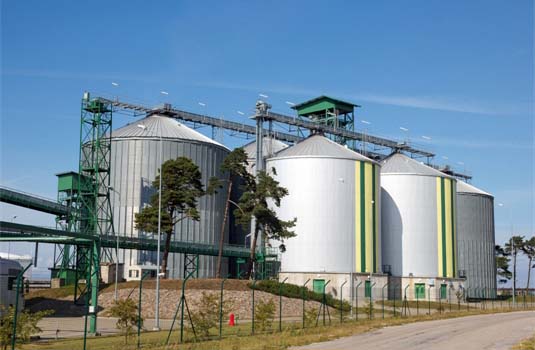|

New and innovative fuel sources are currently being developed in an attempt to find alternative energy sources to replace conventional fossil fuels. The effort is focused on finding a viable fuel source that would reduce our dependence on foreign oil and ultimately produce the next major source of energy.
Current national energy demands are exponentially increasing as we progress into the digital age and as the population increases.Consequently, the worldwide supply of fossil fuels is diminishing as a result of increased energy demands and it is anticipated that these non-renewable fuel sources will become exhausted by the end of the century.
This places a great importance on developing alternative ways of producing fuel. One such method that is currently being refined is using vegetable oil found in agricultural crops as the base for developing biodiesel fuels.
History of Biodiesel Fuel
Biodiesel fuel was first conceptualized by the inventor of the diesel engine, Dr. Rudolf Diesel, in 1895. He demonstrated a diesel engine that used peanut oil as its fuel source in 1900 at the Paris World Exhibition.
Dr. Diesel viewed using vegetable oil fuel as a means to provide economic growth in remote areas of the world due to widely available agricultural crops as the source of the fuel. He also speculated that the use of vegetable oils as a fuel source would in time become as important as oil and coal tar that was used extensively in his day.
The abundance of oil and coal tar in the early 1900s limited the viability of biodiesel; however, with the current depletion of worldwide fossil fuel supplies, biodiesel may become a necessary source of fuel in the near future.
How it Works
Straight vegetable oil found in soybeans, sunflower seeds, rape seeds, and palm oil can be used as fuel provided engines are specifically built to handle the increased viscosity over conventional diesel fuel. However, instead of altering the type of engine, the viscosity of vegetable oil can be reduced through processing, thus allowing it to be used in conventionally built diesel engines.
Vegetable oil is converted to “biodiesel fuel” by reacting vegetable oil and alcohol in the presence of a catalyst. This reaction, known as transesterification, produces an alcohol ester that possesses properties very similar to petrochemical based diesel fuel including similar viscosities. Biodiesel fuel can then be used in standard diesel engines as the primary fuel source.
Advantages of Biodiesel
The major advantage of biodiesel fuel is that it is a renewable energy source and can be produced from spent oils including by-products from other industries such as spent vegetable oil from restaurants. The emissions from biodiesel engines are also significantly less polluting than standard diesel fuel as they contain little to no sulfur or carcinogenic benzene. Another advantage to using biodiesel fuel is that the lubricity is much higher than standard diesel fuel reducing the wear and tear on engines ultimately leading to longer engine life.
Disadvantages of Biodiesel
There are a number of limitations preventing the widespread use of biodiesel fuel. Consumer and manufacturer confidence needs to be built by testing various formulations of diesel fuel in a variety of engine sizes and shapes. Some initial technical problems include winter operability, filter clogging, and the degradation of other rubber engine components.
Other limitations include an acceptable industry standard for biodiesel fuel performance properties that can accommodate biodiesel fuel processing differences. Balancing the costs and availability of supplying biodiesel fuel to appropriate markets also remains as a hurdle to widespread use.
Biodiesel Fuel for Use in Primary or Stand-by Power Generation
One particular market that could benefit from the development of a more environmentally efficient and friendly fuel would be the power generation industry. Diesel generators are used as a prime power supply in remote locations where connecting to a power grid is not readily available. For instance, oil and gas rigs utilize on-site diesel power generation as a remote power supply.
The diesel engines and generators are run continually thus requiring maintenance to keep engines running like new. The increased lubricity of some biodiesel formulations has the potential to reduce the amount of engine deterioration and thus engine maintenance.
Diesel generators used to provide essential stand-by power (for facilities such as hospitals, datacenters, etc.) during times of power outage would greatly benefit from using a less polluting fuel like biodiesel. These facilities are primarily in residential neighborhoods where pollution is unwanted.
Summary
Biodiesel as a viable fuel alternative holds great promise as a sustainable energy source that could contribute to the nation’s growing energy demands. The numerous advantages that the fuel has should pave the way to further research to eliminate any current negative aspects of using the fuel. The United States is currently the world’s number two producer, behind Europe, of biodiesel fuel and over $200 million a year has been set aside in the new energy bill for biodiesel research and development.
Other Biodiesel Website References
http://www.biodiesel.org - Official Site of the National Biodiesel Board – National trade association representing the biodiesel industry as the coordinating body for research and development in the United States.
http://www.eere.energy.gov/afdc/fuels/biodiesel.html - U.S. Department of Energy: Energy Efficiency and Renewable Energy – Government operated site that includes information on all available renewable energy sources including biodiesel fuel.
http://www.wnbiodiesel.com - Willie Nelson’s Biodiesel – includes extensive technical information on the development of biodiesel fuel.
|